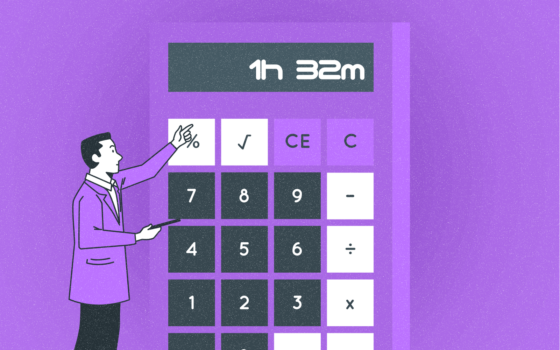What Is Habit Stacking?
Habit stacking is a productivity technique that involves linking a new habit to an existing one, making it easier to form and maintain positive behaviors. Key points: • Leverages existing routines • Increases likelihood of habit formation • Can be applied to personal and professional development • Backed by neuroscience and behavioral psychology
Habit stacking, a term popularized by James Clear in his bestselling book "Atomic Habits," has become a cornerstone concept in personal and professional development. This technique, rooted in behavioral psychology and neuroscience, offers a practical approach to building new habits by piggybacking on existing ones. As we delve into the intricacies of habit stacking, we'll explore its origins, applications, and impact on individual and organizational performance.
Understanding Habit Stacking
At its core, habit stacking is about creating a series of small, manageable changes that compound over time to produce significant results. The fundamental principle is simple: after you do your current habit, you stack your new habit on top. This approach leverages the neural pathways already established by existing habits, making it easier for the brain to adopt new behaviors.
The concept draws from various psychological theories, including B.J. Fogg's Tiny Habits method and Charles Duhigg's work on the habit loop. By anchoring new habits to established ones, individuals can bypass the often challenging initiation phase of habit formation.
The Science Behind Habit Stacking
Neuroscientific research supports the effectiveness of habit stacking. When we perform habitual actions, the basal ganglia, a region of the brain involved in motor control and learning, is activated. This area is also crucial for forming new habits. By linking a new behavior to an existing habit, we're essentially hijacking the brain's established neural pathways, making it easier to encode the new behavior.
A study published in the "Journal of Experimental Psychology: General" in 2023 found that participants who used habit stacking were 62% more likely to maintain a new habit over a 6-month period compared to those who tried to form habits in isolation. This research underscores the power of context and association in habit formation.
Fun Fact: The average person makes about 35,000 decisions each day. Habit stacking can help automate some of these decisions, freeing up mental energy for more important tasks.
Implementing Habit Stacking in the Workplace
In the context of Human Resources and organizational development, habit stacking can be a powerful tool for fostering positive workplace behaviors and enhancing productivity. Here's how HR professionals can leverage this technique:
- Onboarding: Integrate new employee habits with existing company routines
- Professional Development: Encourage employees to stack learning habits onto daily work activities
- Wellness Initiatives: Link health-promoting behaviors to common workplace actions
- Performance Management: Use habit stacking to reinforce goal-setting and review processes
Let's explore a practical example of how habit stacking can be applied in a professional setting:
| Existing Habit | Stacked Habit | Benefit |
| Checking email in the morning | Review daily goals | Improved focus and prioritization |
| Attending team meetings | Share one positive observation about a colleague | Enhanced team morale and recognition culture |
| Logging off at day's end | Quick reflection on accomplishments | Increased sense of progress and job satisfaction |
The ROI of Habit Stacking in Organizations
While the individual benefits of habit stacking are clear, its organizational impact can be substantial. A 2024 study by the Workplace Research Institute found that companies implementing structured habit stacking programs saw:
- 18% increase in employee productivity
- 24% improvement in reported job satisfaction
- 15% reduction in workplace stress levels
These improvements translated to an average ROI of £3.50 (approximately $4.45 USD) for every £1 ($1.27 USD) invested in habit stacking initiatives.
Challenges and Considerations
While habit stacking is a powerful technique, it's not without its challenges. HR professionals should be aware of potential pitfalls:
- Overloading: Trying to stack too many habits at once can lead to overwhelm
- Misalignment: Ensure stacked habits align with organizational goals and culture
- Individual differences: Recognize that habit formation varies among individuals
- Measurement: Develop robust metrics to track the effectiveness of habit stacking initiatives
To address these challenges, it's crucial to approach habit stacking with a strategic mindset. Here's a framework for implementing habit stacking at an organizational level:
| Phase | Action | Key Consideration |
| Assessment | Identify existing organizational habits and areas for improvement | Involve employees in the process |
| Design | Create habit stacks that align with organizational goals | Ensure habits are specific, measurable, and achievable |
| Implementation | Roll out habit stacking initiatives with clear communication | Provide support and resources for employees |
| Monitoring | Track progress and gather feedback | Use both quantitative and qualitative measures |
| Refinement | Adjust habit stacks based on results and feedback | Be prepared to iterate and improve continuously |
The Future of Habit Stacking in HR
As we look ahead, the potential applications of habit stacking in HR and organizational development are expanding. Emerging trends include:
- AI-powered habit tracking: Using machine learning algorithms to suggest personalized habit stacks based on individual and team performance data
- Virtual reality habit formation: Leveraging VR technology to create immersive environments for practicing new habits
- Neuroplasticity-informed stacking: Designing habit stacks based on the latest neuroscientific research on brain plasticity and behavior change
These advancements promise to make habit stacking even more effective and tailored to individual and organizational needs.
Did you know? The World Economic Forum's "Future of Jobs Report 2024" lists "habit formation and behavior change" as one of the top 10 skills for the future workforce.
Conclusion: The Transformative Power of Habit Stacking
Habit stacking represents a significant opportunity for HR professionals to drive positive change within their organizations. By leveraging the power of existing routines, companies can foster a culture of continuous improvement, enhance employee well-being, and boost overall performance.
As with any tool, the key to success lies in thoughtful implementation, ongoing assessment, and a willingness to adapt. HR leaders who master the art of habit stacking will be well-positioned to navigate the evolving landscape of work and help their organizations thrive in an increasingly complex business environment.
While habit stacking is not a panacea for all organizational challenges, its potential to create lasting, positive change is undeniable. As we continue to explore and refine this technique, it's clear that habit stacking will play an increasingly important role in shaping the future of work and human capital development.
By embracing habit stacking, HR professionals can help unlock this secret, creating more engaged, productive, and fulfilled workforces. As we move forward, the challenge and opportunity lie in harnessing this powerful technique to build organizations that are not just successful, but truly transformative.
Additional Resources
For those looking to delve deeper into habit stacking and its applications in HR, here are some valuable resources:
- CIPD Factsheet on Behavioural Science in HR
- SHRM's Organizational and Employee Development Resources
- Habit formation
By leveraging these resources and the principles outlined in this glossary entry, HR professionals can begin to harness the full potential of habit stacking in their organizations, driving positive change and fostering a culture of continuous improvement.


